How to Beef Up Vocals in Logic Pro X
Do your vocal tracks really sound THAT bad? Just kidding!
Actually, you'll want to learn how to EQ vocals even if your vocals sound great. EQing vocals isn't necessarily about making them sound better, it's about blending them into the mix.
However, you can definitely improve your vocals with the EQ moves you'll be learning today!
I still recommend reading THIS article on recording vocals at home if you haven't. It's important to set yourself up properly before getting to the mixing stage.
EQ might be a great tool, but it won't solve all your problems…
That's why we're going to be going over some basics before getting into EQing.
After that, I'll show you how to EQ vocals in Logic Pro X step-by-step and even provide some downloadable presets to get you started.
So, I hope you'll stick around to the end!
Let's get started…
- Vocals, Microphones and EQ
- What Should I Do BEFORE EQing Vocals
- 8 Steps To EQ Vocals in Logic Pro X
- Vocal EQ Settings: Downloadable Presets
- Summary: How To EQ Vocals in Logic Pro X
Vocals, Microphones and EQ
Male or female?
Baritone or tenor? Alto or soprano?
You should be able to answer those questions when it comes to your vocalist. For example, you should know if you're working with a baritone male or a soprano female.
That'll already give you a pretty good idea of how to EQ.
If you're not familiar with those terms (baritone, tenor, alto and soprano), they basically refer to your vocalist's range. Here, for your reference…
- Baritone: A2 – F4
- Tenor: C3 – A4
- Alto: G3 – A5
- Soprano: C4 – A5
Not only will that affect how you EQ vocals, it'll also determine which microphone will be best for that particular vocalist.
That brings us to our next topic… MICROPHONES!!
If you haven't already checked out THIS guide, I highly recommend looking into the best microphones to record vocals at home.
In short, the first EQ your vocals pass through is your microphone.
That's right, microphones aren't "transparent". You'll need to take into consideration how the microphone will affect the voice you're working with.
The type of microphone will also have a dramatic impact on the overall sound and feel.
Remember, some things cannot be changed in post-production.
However, you can definitely compensate for your microphone's EQ curve with an EQ plugin in post-production. That's one of the main functions of the EQ plugin(s) in your DAW.
Also, you can't always predict how well your vocalist + microphone will blend in the mix.
So, let me summarize all of that…
- You choose your microphone based on your vocalist's gender/range
- You EQ according to your vocalist's AND microphone's character
- The mix will determine how you EQ in post-production, not a "cheat sheet"
That last point is SUPER important!
I'll definitely be giving you some presets, but it doesn't mean that each preset will suit every type of mix.
You need to use your ears too, you know?
That being said, I hope you're going to keep reading to find out how to do just that.
Next up, we're just going to prepare our vocal tracks for EQ…
What Should I Do BEFORE EQing Vocals
When it comes to vocals, you'll probably have LOTS of tracks.
You'll most likely have them organized into categories like leads, backups, etc…
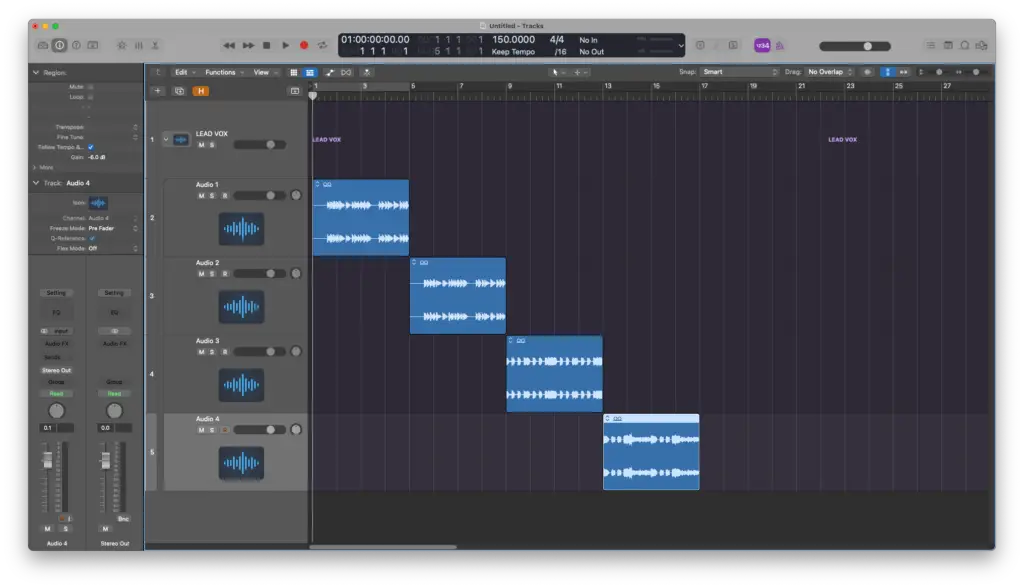
However, you might also be completely disorganized and have a different track for each take you recorded. That's okay while recording, but you need to organize things NOW!!
Where possible, I'm going to ask you to merge your clips on one track.
Here's an example…
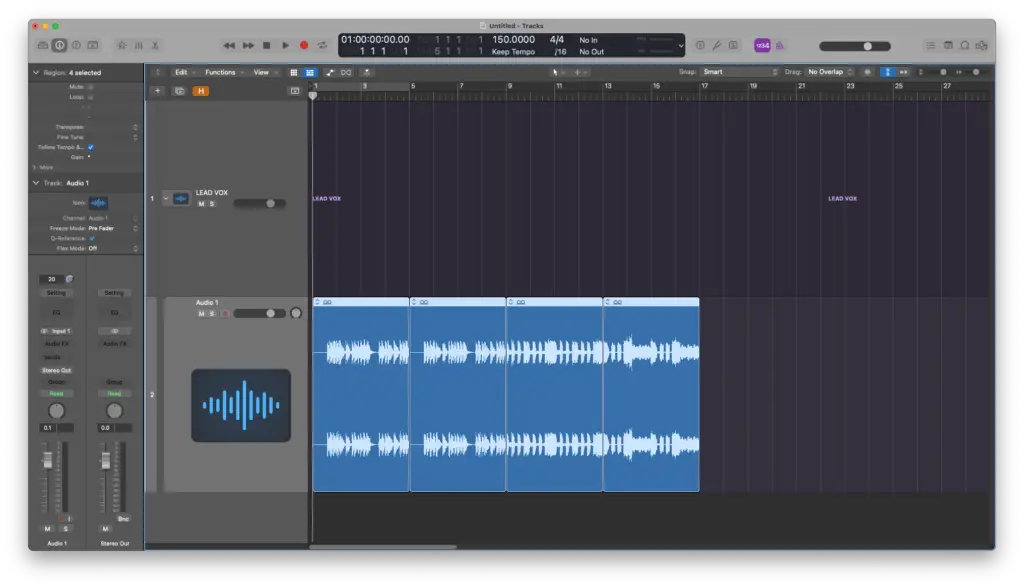
However, it's not a dealbreaker if you want to leave things as they are. I just want you to make things as simple for yourself as possible.
Either way, we can easily route our vocal tracks to one or more sub-mixes.
Ideally, we want to EQ as many tracks as possible in one shot.
In other words… We're not going to load an EQ plugin on every single track (especially if there are dozens of them). That would take too much time and CPU power.
For example, you might want to route all of your lead vocals to a bus you'll call "LEAD VOX" and all your backup vocals to a bus you'll call "BACK VOX".
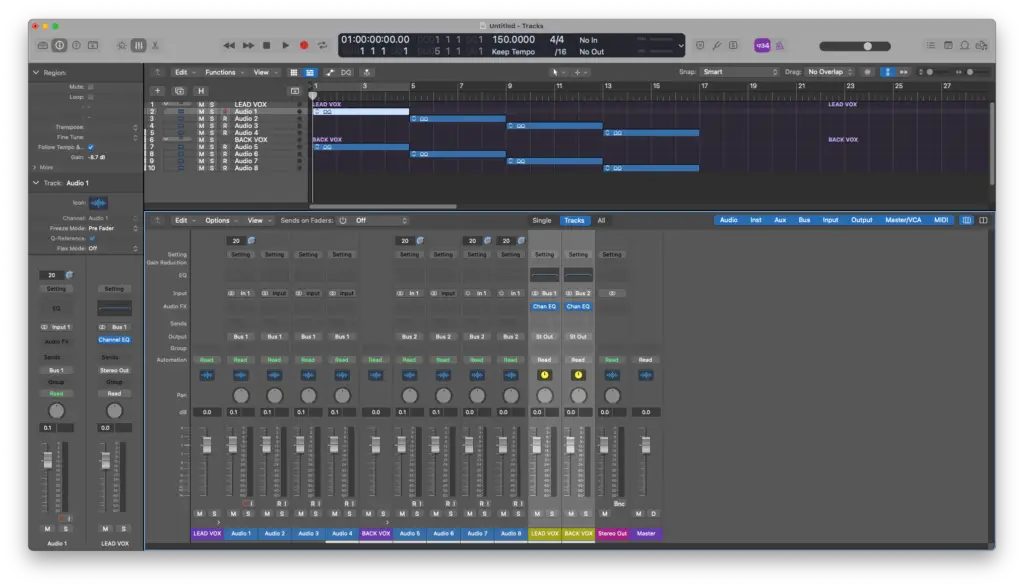
Does that sound like a plan? I hope it makes sense!
That way, you'll get to EQ your lead vocals one way and backup vocals slightly differently.
I really want you to think about this BEFORE moving on because it's much more difficult to re-organize things once we've started the mixing process.
If you're ready to move on though, let's EQ some vocals…
8 Steps To EQ Vocals in Logic Pro X
Step 1 – High-Pass Filter around 60 Hz – 200 Hz
Depending on the type of vocal you're working with (baritone, tenor, alto and/or soprano), you'll be setting your HP Filter to clean up the bottom-end.

Step 2 – Low-Pass Filter at 20,000 Hz
This one is NON-NEGOTIABLE. We don't hear anything above 20,000 Hz, so this is just to prevent anything from passing above that threshold.

Step 3 – Low-Shelf around 100 Hz – 200 Hz
You'll only be needing this one for male vocals. If you recorded using a dynamic microphone, it'll almost be required because of the proximity effect.

Step 4 – Cutting around 200 Hz – 500 Hz
If your vocals sound "muddy", you'll definitely want to do some cutting in the low-mids. It'll add clarity and make space for other instruments in the mix.
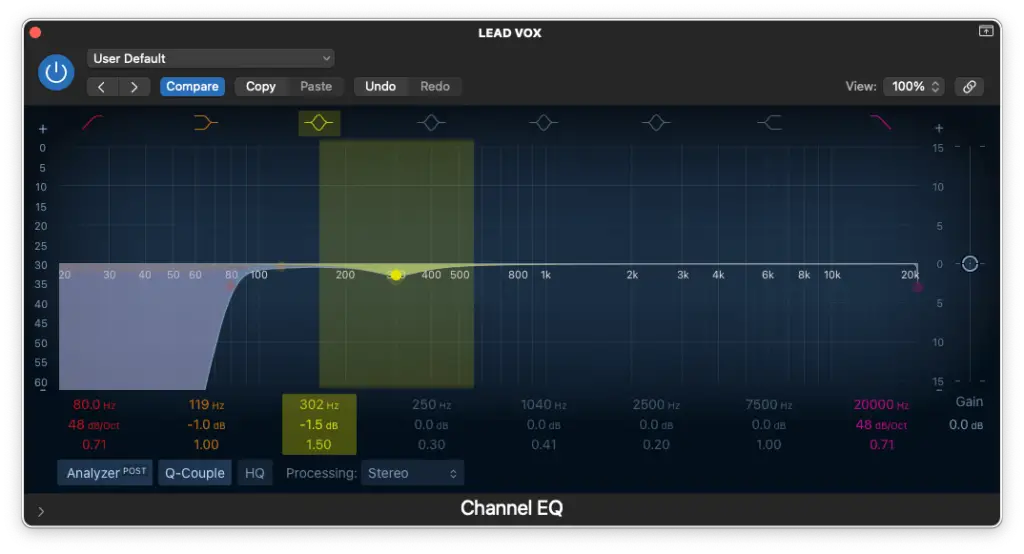
Step 5 – Boosting/Cutting around 800 Hz – 1,000 Hz
Do your vocals sound too nasally? You'll definitely want to cut around this range. If they're not nasally enough, then you'll simply do the opposite.

Step 6 – Boosting around 1,000 Hz – 2,000 Hz
Most of the time, I don't recommend doing anything around this range. If you feel like your vocals aren't cutting through the mix and need more "bite", then give them a little boost.

Step 7 – Boosting around 5,000 Hz – 8,000 Hz
In the context of the mix, you'll definitely hear a difference around this range. This is usually where a lot of other instruments get cut, so it's a great place to boost your vocals.
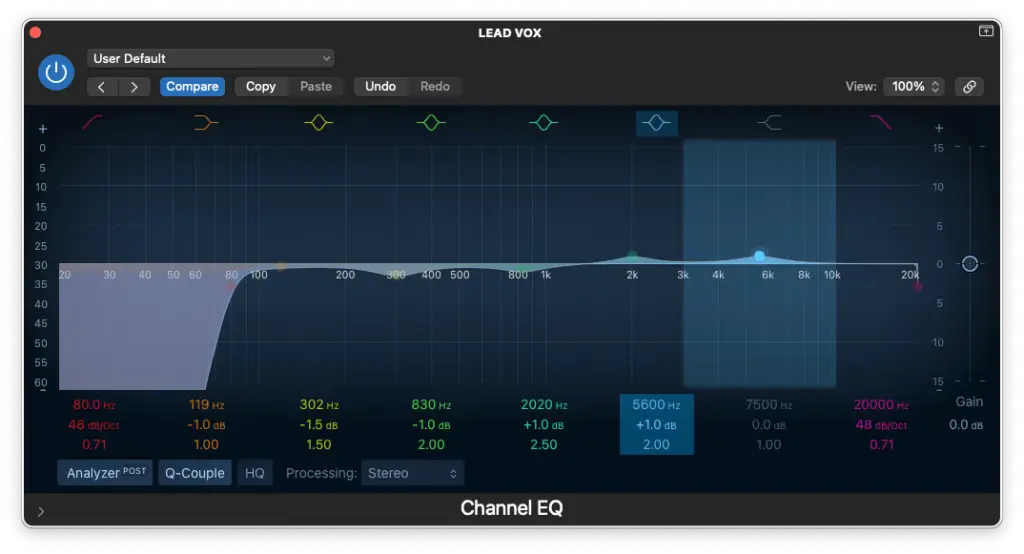
Step 8 – High-Shelf around 10,000 Hz – 15,000 Hz
Creating a high-shelf in this range and boosting will add more air/breathiness to your vocals. If you feel like they've got too much, then you can just as easily reduce it.
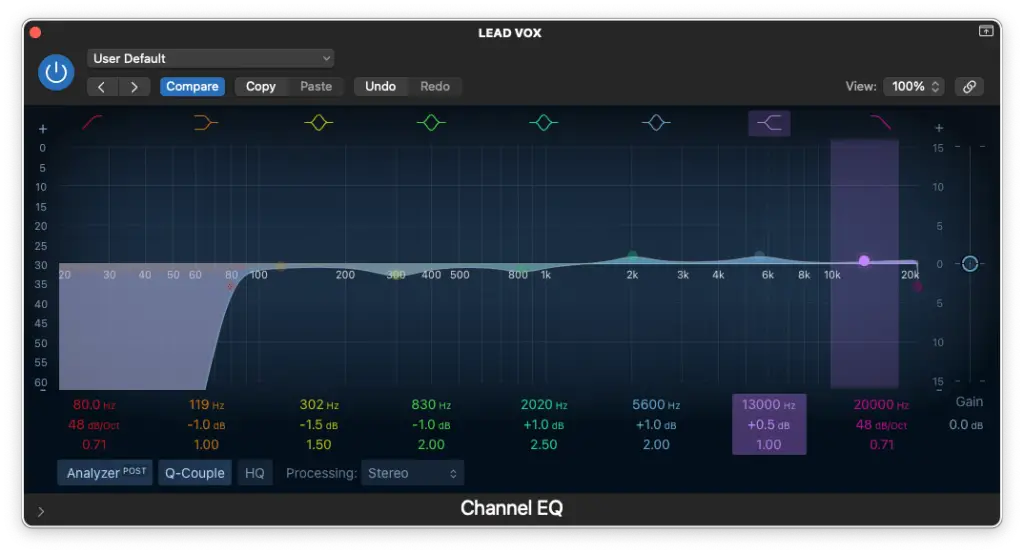
Vocal EQ Settings: Downloadable Presets
I definitely recommend trying the steps we covered in the previous section for yourself BEFORE using any presets.
However, it might be helpful to experiment with these presets as well…
HERE'S THE DOWNLOAD LINK!!
You can start with these as templates, but you'll need to tweak them according to each project you're working on.
That being said, I hope these presets give you the confidence you need to get started!
Summary: How To EQ Vocals in Logic Pro X
How do your vocal tracks sound now?
I hope that learning how to EQ vocals has given you more confidence to put out some music into the world this year!
It's not as difficult as you think, you just need to start doing it MORE OFTEN!!
It also gets much easier once your recording technique gets better.
Once again, I highly recommend starting with THIS article if you're still struggling to get professional-sounding vocal tracks at home.
You'll also want to have at least TWO different types of microphones.
I understand if you're just working with your voice, but you'll definitely need to accommodate different types of vocalists if you want to do this professionally.
It's also much better to use your ears instead of relying on "vocal EQ cheat sheets".
They'll only get you so far…
So, let me know if you have any questions in the comments! If you have any tips and tricks of your own, feel free to share them down there as well!
Sources
https://www.izotope.com/en/learn/how-to-eq-a-pop-vocal.html
https://www.waves.com/recording-vocals-at-home-4-eq
Source: https://decibelpeak.com/how-to-eq-vocals/
0 Response to "How to Beef Up Vocals in Logic Pro X"
Post a Comment